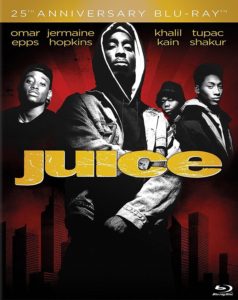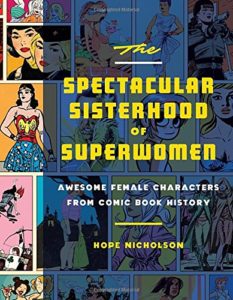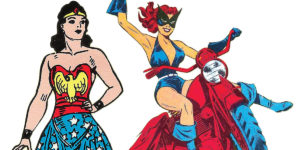 Paramount is pushing the power of Juice. A powerful morality tale steeped in ’90s urban culture, Juice marked the feature directorial debut of Spike Lee’s acclaimed cinematographer Ernest R. Dickerson and the first starring roles for Omar Epps and an electrifying Tupac Shakur.
Paramount is pushing the power of Juice. A powerful morality tale steeped in ’90s urban culture, Juice marked the feature directorial debut of Spike Lee’s acclaimed cinematographer Ernest R. Dickerson and the first starring roles for Omar Epps and an electrifying Tupac Shakur.
Now, 25 years later, the gritty and influential film continues to be celebrated for its realistic portrayal of Harlem life, the early New York hip hop scene and the fate of four friends in pursuit of the power and respect they call the Juice.
To mark the film’s silver anniversary, Paramount Home Media Distribution has released the film on Blu-ray for the first time ever, and it’s packed with brand new interviews with Dickerson, producer David Heyman, Epps and fellow actors Khalil Kain and Jermaine Hopkins. The cast and crew look back on making the film, share heartfelt stories of working with Shakur and reveal the influence that Juice had on them both personally and professionally. The in-depth featurettes are also loaded with never-before-released footage of the cast on set and vintage interviews with Shakur, Queen Latifah, Cindy Herron of En Vogue, the Shocklee brothers, Eric B, EPMD, Cypress Hill and more. Along with a brand new commentary by the director, fans also will get to see the original ending and hear Dickerson detail the reasons that it was changed prior to the film’s theatrical debut.
Juice has also been released on DVD and on Digital HD.

 We turn the spotlight onto two must-have documentaries on DVD: Public Media Distribution’s Audubon (available June 20) and PBS Distribution’s American Masters: Alice Waters and Her Delicious Revolution (now available).
We turn the spotlight onto two must-have documentaries on DVD: Public Media Distribution’s Audubon (available June 20) and PBS Distribution’s American Masters: Alice Waters and Her Delicious Revolution (now available).
 Here, Nicholson plumbs each decade of comics’ rich history, from the ’30s to today, exploring not only prominent women (both fictional and real) but also key trends. Readers will time-travel through the birth of the industry in the ’30s, the wartime comics of the ’40s, the Golden Age of superheroes in the ’50s, the popularity of romance comics in the ’60s, the indie comics boom of the ’70s, and the creation of the modern comic book trade from the 1980s to today.
Here, Nicholson plumbs each decade of comics’ rich history, from the ’30s to today, exploring not only prominent women (both fictional and real) but also key trends. Readers will time-travel through the birth of the industry in the ’30s, the wartime comics of the ’40s, the Golden Age of superheroes in the ’50s, the popularity of romance comics in the ’60s, the indie comics boom of the ’70s, and the creation of the modern comic book trade from the 1980s to today. Throughout the book Nicholson reveals fascinating anecdotes about women who worked in the medium, from the all-female creative team at publisher Fiction House during World War II to the surge of female creators during the independent comics boom of the 1970s.
Throughout the book Nicholson reveals fascinating anecdotes about women who worked in the medium, from the all-female creative team at publisher Fiction House during World War II to the surge of female creators during the independent comics boom of the 1970s.

 is the first book to showcase the evolving wardrobe of the famed fashion photographer and designer, whose brilliant style is being celebrated as classic tailoring comes back in vogue.
is the first book to showcase the evolving wardrobe of the famed fashion photographer and designer, whose brilliant style is being celebrated as classic tailoring comes back in vogue.
